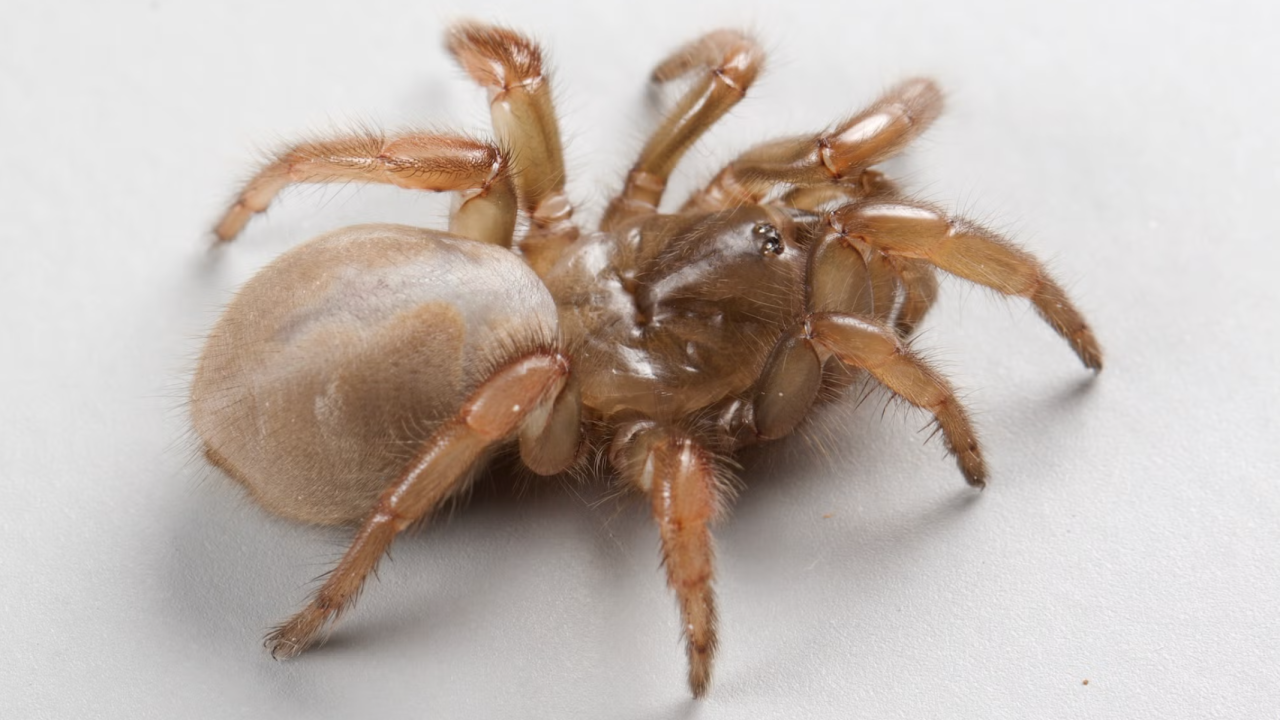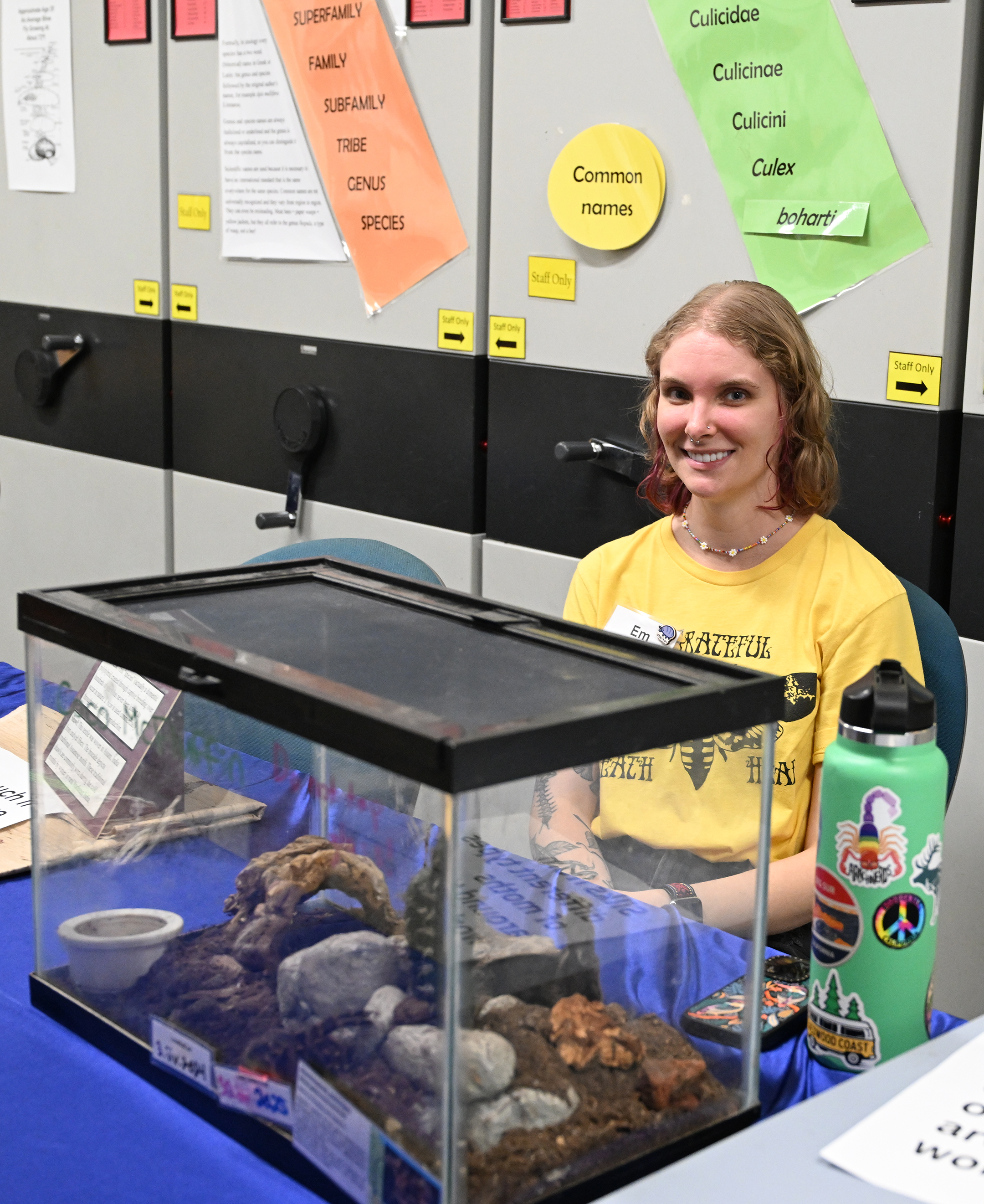
And Along Came a Spider...
Jason Bond Lab Discovers News Species, Publishes Work in Ecology and Evolution
And along came a spider...
And just in time for Halloween.

Scientists in the Jason Bond lab, UC Davis Department of Entomology and Nematology, have just published their research in the journal, Ecology and Evolution, about their newly discovered species of trapdoor spider that inhabits coastal sand dunes stretching from Monterey to California Baja, Mexico.
Doctoral candidate Emma "Em" Jochim and colleagues analyzed genomic DNA from two trapdoor spiders thought to be the same species, Aptostichus simu, and discovered they are not.
Professor Bond named the new species Aptostichus ramirezae after arachnologist Martina Giselle Ramirez, dean of the College of Science at California State University, Stanislaus. Ramirez is known for her pioneering work on trapdoor spider population genetics and champions underrepresented students in STEM disciplines. (She shares her love of spiders in this YouTube video.)
Bond earlier named a new trapdoor species for national civil rights activist Fred Toyosaburo Korematsu, a San Francisco Bay area native who resisted incarceration in the Japanese-American concentration camps during World War II.
The research article, published Oct. 22, is the work of Bond, Jochim, research scientist James Starrett, and Hanna Briggs, a 2025 UC Davis entomology graduate. It is titled "Speciation Pattern and Process in the California Coastal Dune Endemic Trapdoor Spider Aptostichus simus (Mygalomorphae: Euctenizidae) and Description of a New Cryptic Species."
Trapdoor spiders are so named because they construct their burrows with a corklike or wafer trap door made of soil, vegetation and silk. With the recent discovery, there are now four known species of trapdoor spiders in California that live in coastal dune habitats.
Globally, there are more than 50,000 species of spiders, says Bond, the department's Evert and Marion Schlinger Endowed Chair of Systematics. He serves as the executive associate dean of the UC Davis College of Agricultural and Environmental Sciences; director of the Bohart Museum of Entomology; and president of the American Arachnological Association.

"The coastal dune habitats in which A. simus are found are extremely dynamic environments and are of particular interest and conservation concern due to the variety of biotic and abiotic threats faced," they wrote. "Trapdoor spiders can be found in almost all Californian coastal dune systems from Baja California Norte to Oregon. Coastal dunes always have an environmental gradient perpendicular to the shore where fauna correspond to floral zones. Araneomorph spiders (e.g., crab spiders, wolf spiders, etc.) can be found in all coastal dune zones from the drift-line to dune meadows. Within California dunes, mature trapdoor spiders are found on and between the primary dune crest and secondary dune crest because vegetation structure and microclimate are presumably more stable there, and the risk of flooding from high tides is minimized."
Jochim, who enrolled in the UC Davis entomology graduate student program in September 2020, holds a bachelor of science degree in biology (2020) from Millsaps College, Jackson, Miss.
National Science Foundation funds supported the research.
News coverage, to date, includes:
- New Species of Spider Discovered, Just in Time for Halloween (UC Davis)
- UC Davis Researchers Discover New Species of Coastal Spider, Just in Time for Halloween (KQED)
- New Species of Spider Discovered in CaliforniaNew Species of Spider Discovered in California (Newsweek)
- New Spooky Species Discovered in California's Sand Dunes (San Francisco Chronicle)
- New Species of Trapdoor Spider Discovered in California (CTV News)
